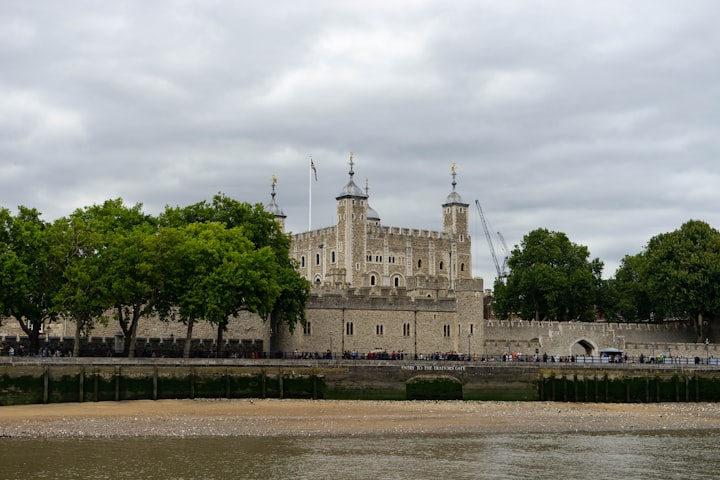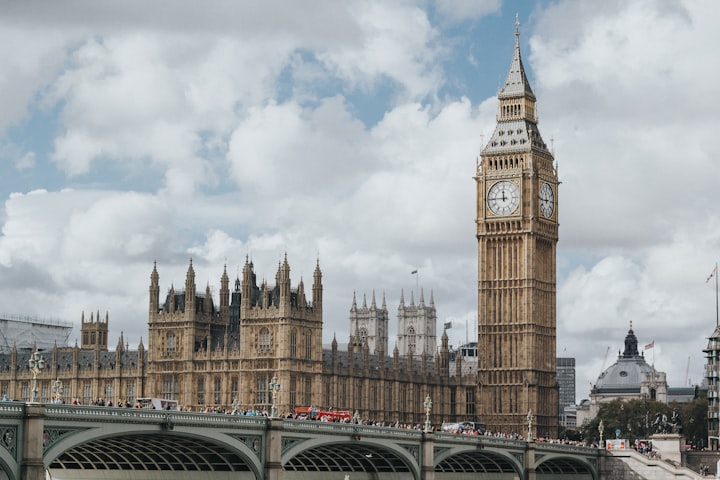Torture at the Tower
Gruesome stories from the Tower of London

I stare frustratingly at my map. I’ve walked the grounds 3 times and I’m still lost.
Beads of sweat gather on my scalp and threaten to cascade down my face and neck
I’m almost ready to give up my search for Torture at The Tower when intrigue whispers in my ear. There’s a long line of people queuing next to a railing, leading to what looks like a tiny entrance where they’re disappearing. Like a starstruck teenager waiting eagerly for a chance glimpse of a celebrity on the red carpet, I wait for my turn to enter the tiny entrance to an historical turmoil.
The darkness swallows me as I step into the entrance (having seen the unmissable sign for Torture Tower as I entered) and the outside world along with reality disappear behind me. Like an unwelcome guest I’m greeted by a dense musty odour which fills my nostrils so much I have to cover my nose, as my eyes adjust to the dim lighting I take in my surroundings.
Replicated torture instruments that would have been in practice around the 1500s+
One particular instrument which causes a shudder up my spine is the rack; the most commonly used instrument for torture, used to stretch the body with eventual dislocation of the limbs and ripping from their sockets. Also known as the ‘Duke of Exeter’s daughter,’ an invention by the 2nd Duke of Exeter, constable of the tower in the 15th Century
Victim Anne Askew, English writer and one of the earliest known female poets to compose in the English language was chained to the rack for withholding the names of protestant sympathisers. One of the only women to be tortured on the rack and burnt at the stake. The brutality of her experience was recorded in her diary and later smuggled from the tower.
Because I lay still and did not cry, my Lord Chancellor and Master Rich took pains to rack me with their own hands til I was nigh dead
The Manacles were later used to entrap John Gerard, a spy and priest who refused to provide the name of his spy leader, Henry Garnet but also his mission to remove the queen from power.
His hands suspended in the metal clasps above his head leaving the body hanging and feet dangling he was asked if he would finally give up the information.
I cannot and will not
Gerard was fortunate enough to escape the tower and later wrote his book Autobiography of a hunted priest
Guy Fawkes was imprisoned for his involvement in the gunpowder plot, he was sentenced to be hanged, drawn and quartered but instead jumped from the gallows breaking his own neck so he wasn’t subjected to seeing his own insides splayed before him
The last prisoner to be killed in the tower was German spy Josef Jakobs, caught parachuting into the UK during WW2, he was shot 15th August 1941.
The tower is now the most popular tourist attraction in the country, leading to becoming an official UNESCO WORLD HERITAGE SITE in 1988
It’s an unusually hot day for April so it’s pretty busy at the tower but people aren’t focusing on the history that they’ve paid to visit, they’re more interested in the gun salutes which commenced at 12 midday. “It’s a celebration of the Queen’s birthday” says the lady in the booth. I’m still startled by the 62gun shots and by the looks of it, the other tourists are too.
About the Creator
Kate Bolter
I'm a crazy little 36 year old. Love to write about my travels even though it's been ages since I've been away! (even before Covid)
Majority of my travel was in Australia but also trying to broaden that-eventually!






Comments
There are no comments for this story
Be the first to respond and start the conversation.